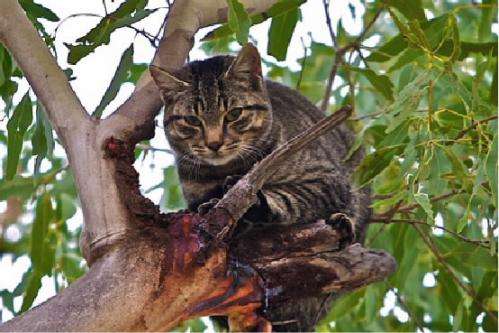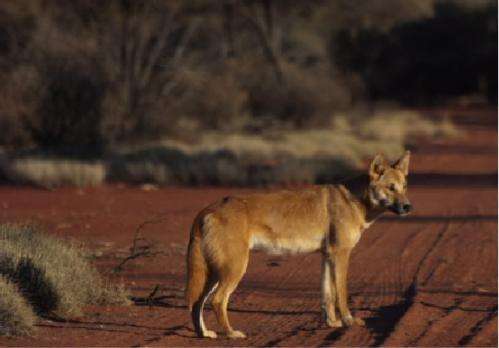Researchers examine impact of dingo population on feral cats

Are dingoes the top dog in the Australian bush and do they have a role in protecting our native biodiversity against the impacts of feral cats?
A new study, led by James Cook University researchers and published in the Journal of Applied Ecology, suggests that dingoes may be keeping feral cats at bay in northern Australia, and preventing them getting free access to native wildlife.
Leila Brook, a PhD Candidate in JCU's School of Marine and Tropical Biology, said previous studies had suggested dingoes could suppress foxes and feral cats by attacking and killing them. However, cats could still be found where there were plenty of dingoes, she said.
"That makes it easy to argue that dingoes make no difference to cats. But cat behaviour might be limited in the presence of dingoes, in ways that could reduce their impact on native animals," she said.
Researchers from JCU, the University of Tasmania and Deakin University surveyed pairs of large cattle properties across northern and central Australia, where one property controlled dingoes using1080 poison baiting and sometimes shooting, and the other left dingoes alone.
"This design allowed us to measure the effects of predator control on dingoes, and test how reduced dingo numbers might affect feral cats," Ms Brook said.

"We found that predator control may be doing more than just reducing dingo numbers, it might actually change their behaviour and effectiveness as a top predator in the Australian food chain.
"We found that as dingoes were removed in higher numbers using poison baiting, cats were recorded at higher rates, suggesting that cat populations can be larger in areas with fewer dingoes."
The researchers also looked at the predators' activity patterns.
"Dingoes and feral cats both eat nocturnal mammals that come out at dusk. Where dingoes were left alone, they were mainly active in the evening and at dawn when they hunt wallabies and kangaroos. But dingo activity was much lower in the evening where dingoes were baited.
"Feral cats on the other hand, had higher activity levels in the evening in the baited areas, filling the time gap when dingo activity was low. This suggests they can take advantage of the reduced risk of dingo encounter, to hunt at an ideal time for finding and killing small mammals and nocturnal reptiles such as geckos."
Ms Brook said that if dingo activity declined in the evening, feral cats could hunt wildlife when they were most active, without the threat of harassment from the larger predator.
With free access at these times, they could exert a stronger negative impact on wildlife such as small mammals."
Ms Brook said the study suggested that the interaction between dingoes and cats was more subtle than previously thought.
"It involves behaviour as well as numbers of cats. This also means that dingoes could have a bigger role in preventing cat impacts than has been thought, which is good news for native wildlife.
"These interactions may be particularly important in northern Australia, where feral cats are likely contributors to the recent widespread decline in mammals across the Top End."
Journal information: Journal of Applied Ecology
Provided by James Cook University


















